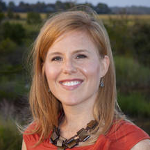
Food allergy is among the fastest-growing public health concerns affecting nearly every school across the United States. One in 13 children in the U.S., or roughly two in every classroom, has a food allergy.
Currently there is no cure for food allergies, and recommended care includes dietary avoidance of allergenic foods and prompt response after accidental exposure.
Eight foods account for 90 percent of all reactions: milk, eggs, peanuts, tree nuts, soy, wheat, fish and shellfish. Even trace amounts of a food allergen can cause a reaction. A reaction to food can range from a mild response, such as an itchy mouth, to anaphylaxis, a severe and potentially deadly reaction that can cause shock, narrowed airways and a dramatic drop in blood pressure. In fact, food-induced anaphylaxis in children is responsible for 150 deaths annually in the United States.
Given the gravity of the condition and lack of treatment options, parents of children with severe food allergies are challenged to promote their child’s safety and well-being.
This is particularly true for parents of school-aged children with food allergies. As children leave their parents’ care for multiple hours each day, parents are no longer able to control the child’s environment, and the possibility of exposure looms as a constant threat. For many parents, working to increase their child’s safety in the school environment is one way they decrease the threat.
Here is a recent case seen by a Jacksonville University nursing student in a local hospital emergency department:
WILLIAM
William, a nine-year-old diagnosed with allergies to peanuts and tree nuts at age two, was brought to a local emergency by ambulance after experiencing an accidental exposure to peanuts in his 3rd grade classroom.
Soon after William’s exposure at school, he began to develop symptoms of a severe anaphylactic reaction; shortness of breath, trouble swallowing, swelling of his face and lips and hives over his entire body.
Fortunately, his mother, Beth, had communicated to the school the steps to take in the event William was exposed to peanuts, through a food allergy and anaphylaxis emergency care plan. His food allergy and anaphylaxis emergency care plan detailed exactly what needed to happen in the event of an accidental exposure, including instructions regarding emergency medications such as auto-injectable epinephrine and antihistamines, such as Benadryl.
Fortunately for William, personnel at his school promptly identified his reaction and administered his emergency medications. They also called 911 so William could be transported to a local emergency room for further evaluation.
By the time he arrived at the hospital, many of his initial symptoms had resolved. However, the medical team monitored William for several more hours, observing for any further signs of a reaction.
“Communication is key,” said his mother, Beth. “Parents of children with food allergies must educate teachers, the school nurse and other personnel regarding their child’s allergy.”
Beth also suggests working with the child’s teacher to determine what classroom modifications may be necessary so that children with food allergies can fully participate in class activities. Children with food allergies are protected under the federal Americans with Disabilities Act and must not be excluded from school activities based on their allergy.
Communicating and planning with the school is only part of the preparation, however. As William’s mother states, her most important job is to communicate with William, teaching him self-management skills.
Some tips given William include:
- Only eat foods provided from home or that have been designated as safe by a parent or guardian.
- Never touch anyone else’s food or drink and don’t let anyone touch yours. If they do, don’t eat it and tell an adult.
- If you don’t feel well, speak up immediately. Tell an adult: “I need help. I think I’m having a reaction.”
- Have your emergency medications available at all times.
As William reached school-age, Beth remembers fall as a time of year riddled with anxiety and fear as her son began another school year, leaving her care for an extended period of time each day. However, over time and with the help of William’s allergist and websites such as foodallergy.org, Beth has transformed her anxiety into advocacy and her fear into fortitude.
“Accidents will happen,” she said. “It’s a part of life. As William’s mom, it’s my job to be prepared and do what I can to lessen the chance of an accident occurring.”
By doing so, Beth has provided William the opportunity to learn, grow and experience all that school has to offer.
School districts around the country are dealing with food allergies. Check with your district for its policies regarding food allergies and medications at school. Examples of food allergy and anaphylaxis emergency care plans can be found at foodallergy.org.
Nursed to Health is an occasional feature in which Jacksonville University School of Nursing faculty discuss symptoms, diagnoses and treatments based on composites of patient cases handled by instructors, students and alumni of JU’s local training programs. Today’s column is by Dr. Brantlee Broome, Assistant Professor of Nursing in JU’s Brooks Rehabilitation College of Healthcare Sciences.
 Wave Magazine Online Jacksonville University News Hub
Wave Magazine Online Jacksonville University News Hub
